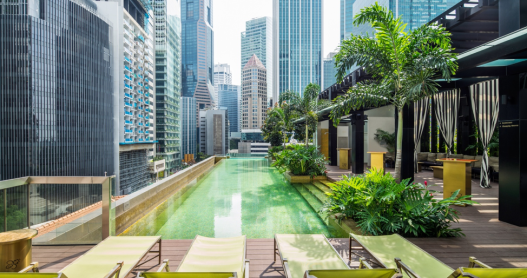Overview
When’s the best time to go to Bangkok?
In short, Bangkok is hot year-round so there’s not really a season in which you’ll wish you’d brought a heavier jacket. That said, the coolest, most pleasant time to visit is between November and late February. In March, the heat and humidity ramp up again and last through May. The annual southwest monsoon sweeps in from the Indian Ocean some time between May and July and lasts into November, bringing heavy rains and some local flooding. (Happily, the towns along the Gulf of Thailand follow a different weather pattern and can provide a welcome escape from the downpours.)
How to get around Bangkok
Bangkok is one of Southeast Asia’s main air hubs, and dozens of airlines fly regularly between the city’s Suvarnabhumi Airport and the USA, Europe, Australia, and other parts of Asia. The Thai capital is also easily accessible from such nearby countries as Cambodia, Laos, Malaysia, and Singapore via long-distance buses or trains.
To get around the city, Bangkok’s thousands of taxis are great value, though the volume of traffic on city roads makes the going slow at peak times. A better option for negotiating the main tourist areas like Siam and Sukhumvit is the city’s BTS Skytrain, an elevated rapid-transit system that is both convenient and relatively inexpensive.
Can’t miss things to do in Bangkok
The debate over where to find Bangkok’s best pad thai is fierce, but Thip Samai Pad Thai, in the Phra Nakhon area, has many fans. The restaurant serves variations on just one dish—pad thai—fried over charcoal in the traditional way.
Food and drink to try in Bangkok
Dollar for dollar, Bangkok may well be the world’s finest dining destination. A large part of the city’s culinary fame is attributable to its incredible street food. Vendors serving an array of delights—tender barbecued chicken, complex curries, rice and noodle dishes, tropical fruit—can be found on practically every soi (side street). Favorites include the ubiquitous pad thai (rice noodles fried with egg, tofu, shrimp, and tamarind pulp) and som tum (spicy green papaya salad). You may not know where to start, but you certainly won’t go hungry. The city’s restaurant sector, meanwhile, is also upping its game, with both homegrown and international options to wow critics from any city in the world.
Culture in Bangkok
In Thailand, all roads lead to Bangkok. The capital is the nation’s political center, its spiritual and cultural hub, and a magnet for migrants from all over the country. The country is 95 percent Buddhist, and Bangkok is blessed with hundreds of temples, from humble pagodas to grand, gold-spired complexes. Thais do a fine job of balancing the spiritual and the earthly, however, and just as strong as these religious beliefs is the emphasis on sanuk, the idea that life should be fun.
Temples are an essential part of any itinerary, and it’s important to be versed in some cultural etiquette before exploring them. The basic rule of thumb is to respect tradition and dress conservatively. You don’t need head-to-toe formal clothing, but your shoulders and knees should be covered.
Traditional Thai festivals are a highlight for visitors to Bangkok. The river festival, Loy Krathong, takes place in the twelfth month of the Thai lunar calendar (it usually falls in November) and involves fireworks, lanterns, and thousands of floating offerings to the river spirits on the Chao Phraya river. Songkran, or Thai New Year, occurs in April and is a raucous celebration in which locals and visitors drench each other with water in the name of good fun.
Practical Information
- You can skip securing a visa for stays of 30 days or less. As long as you have a passport (valid for at least six months after your arrival) and an airline ticket that makes it clear you’re not planning to stay, you’re welcome.
- The primary language is Thai, though there are numerous regional dialects.
- The currency is the Thai baht.
- Outlets are 220v and offer outlets for both flat and rounded two-pronged plugs.
Local Resources
Guide Editor
AFAR Editors, with a shared passion for Bangkok, collaborated on this guide.











